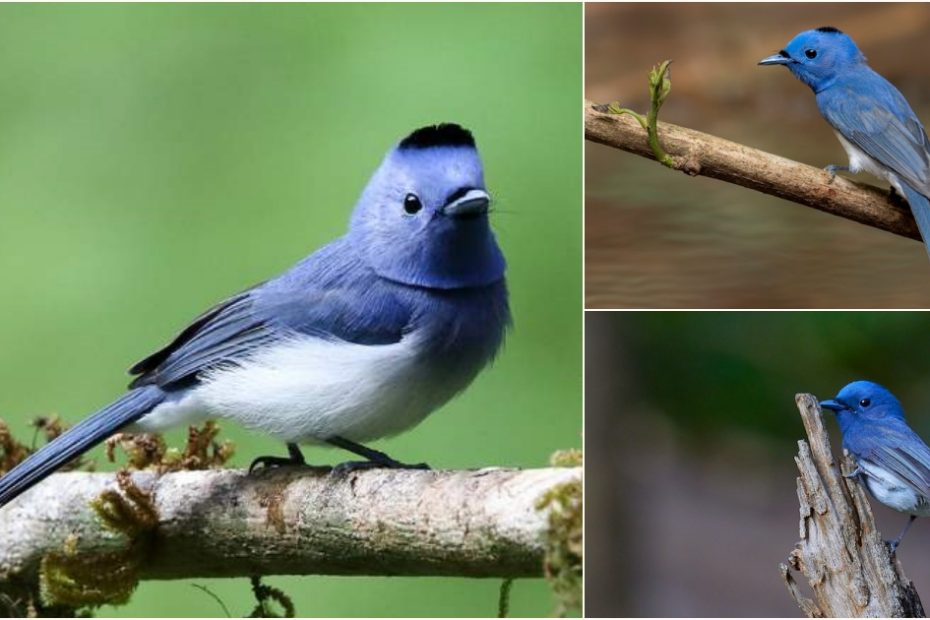

The black-naped monarch, a petite passerine bird, graces the landscapes of southern and south-eastern Asia with its vibrant presence. Renowned for its brilliant blue plumage, this avian species captures attention with its distinctive features. Males flaunt a defining black patch on the back of their head, coupled with a slender black half collar. On the other hand, females sport a more muted appearance, characterized by olive brown wings and the absence of the striking black head markings.



The breeding season, spanning from March to August in India, witnesses the black-naped monarch’s craftsmanship. During this period, they meticulously construct cup-shaped nests placed in secure forks. The cup’s interior is lined with filaments of webbing and fungi, notably from the Marasmius genus, which offers potential protection through antibiotic properties. The nest-building responsibility falls on the female, guarded by the vigilant male. Typically, a clutch consists of three eggs, jointly incubated and nourished by both parents. The young hatch after a span of approximately 12 days. However, the intricate webs of formidable spiders, such as Nephila maculata, pose a rare threat.

Insectivores by nature, these monarchs adopt flycatching techniques for their sustenance. Their upright posture while perched evokes comparisons to shrikes, revealing their alert disposition. In times of alarm or attentiveness, the nape feathers ascend into a pointed crest, adding an element of drama to their demeanor. A notable trait of the black-naped monarch is its participation in mixed-species foraging flocks, often playing a prominent role in such gatherings within the Western Ghats. These birds actively explore the understory of forest canopies, occasionally retreating about 75 meters from disturbed edges due to human disturbances, as observed in Sri Lanka.


The black-naped monarch goes by alternate names, including black-naped blue monarch and black-naped monarch flycatcher. Some classifications differentiate two former subspecies, H. a. blasii (Banggai Island) and H. a. puella (Sulawesi), placing them under the pale-blue monarch (Hypothymis puella) category. With its stunning appearance and intriguing behaviors, the black-naped monarch continues to captivate the hearts of bird enthusiasts and nature admirers alike.





